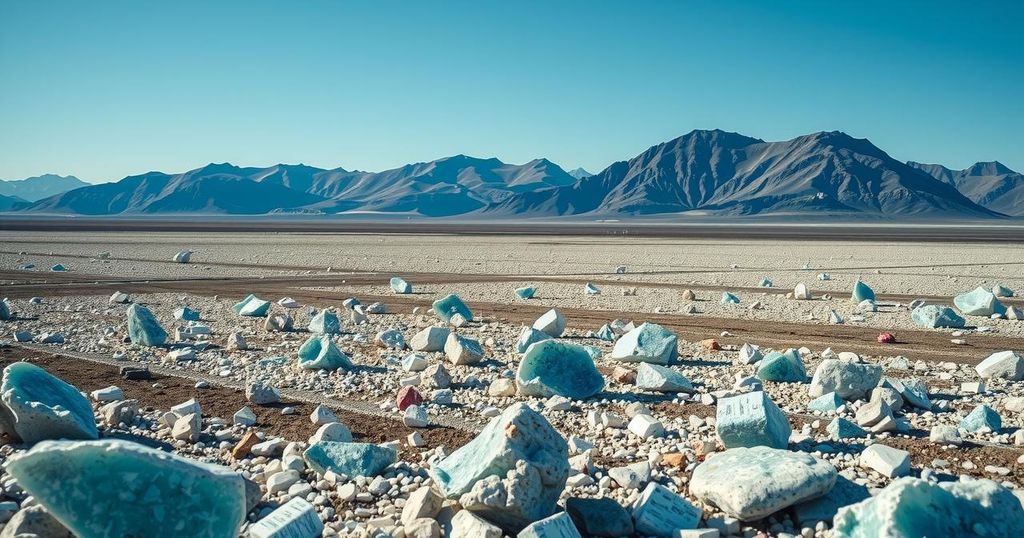India’s Struggles in the Rare Earth Race Against China
India’s quest to exploit lithium and rare earth elements has become fraught with challenges, as government announcements have not translated into practical outcomes. The lithium reserves discovered in Jammu & Kashmir are largely unviable, and India’s dependence on Chinese imports remains. While there is potential for growth in the electric vehicle sector, the lack of infrastructure continues to hamper progress, particularly with battery production.
Recent headlines in India have heralded the discovery of lithium and other rare earth elements, suggesting transformative potential for the country’s economy. Government announcements prompt excitement among experts and investors, yet the reality reveals complexity. Following a year since the revelation of lithium reserves in Jammu & Kashmir, the situation has stagnated due to issues surrounding extraction profitability and environmental concerns.
Initially reported as 5.9 million tonnes of lithium, the reserves were classified as an “inferred resource.” This designation implies uncertainty about both the actual presence of lithium and the feasibility of economically extracting it. Furthermore, the environmentally sensitive nature of the region complicates potential mining efforts. On the other hand, China continues its dominance in the rare earth sector, proficiently mining, refining, and producing lithium at unmatched scales.
China controls approximately 90% of the global rare earth refining capabilities, having established a comprehensive industrial ecosystem that encompasses mining to the final product output. Despite having significant resources, India struggles due to China’s established infrastructure and surplus production capacity, which results in continued reliance on Chinese imports. India’s battery manufacturers, including giants like Amara Raja and Exide, are already securing lithium supplies from outside sources rather than waiting on domestic extraction.
Moreover, the lack of charging infrastructure for electric vehicles (EVs) poses another challenge for India’s ambitious EV goals. It is clear that lithium viability alone is insufficient. The argument presented by analysts highlights that even an immediate solution to lithium sourcing would not solve the infrastructural issues faced by the EV market. While startups tout innovations in battery technology, their strategies for securing raw materials often remain vague and unconvincing to investors.
As the narrative unfolds, it appears India possesses lithium, yet lacks the capability to mine and refine these resources effectively. The intention to limit dependence on China remains overshadowed by persistent import needs. Without significant strides in production and infrastructure development, India’s goals may prove difficult to achieve, while China maintains its competitive edge through ongoing production and technological advancement.
In summary, India’s race to harness lithium and rare earth resources faces substantial hurdles. The nation is in a paradoxical situation, claiming lithium discoveries while lacking effective mining and refining capabilities. Although there is optimism surrounding India’s EV market, inadequate infrastructure and continued reliance on Chinese imports hinder progress. The path forward will require a concerted effort to not only secure resources but also enhance the supporting ecosystem for electric vehicles.
Original Source: www.hindustantimes.com








Post Comment